Chiropractic Treatment in South Korea
Search and Compare the Best Clinics and Doctors at the Lowest Prices for Chiropractic Treatment in South Korea

Find the best clinics for Chiropractic Treatment in South Korea
No pricing info available
Indonesia offers the best prices Worldwide
Price: $ 3
From 111 verified reviews
Abdullah Albarrak, 27 August 2020
The staff are really polite and professional. Helped me with some of my back pain
- Home
- South Korea
Compare Before & After Photos of _procedure_photos.phpChiropractic Treatment
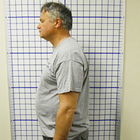
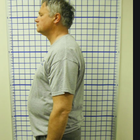
Full-side view
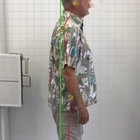
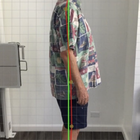
Full-side view
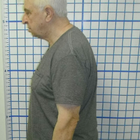

Full-side view


Full-side view
WHY US?
At Medijump, we're making medical easy. You can search, compare, discuss, and book your medical all in one place. We open the door to the best medical providers worldwide, saving you time and energy along the way, and it's all for FREE, no hidden fees, and no price markups guaranteed. So what are you waiting for?

Free

Best Price

Widest Selection

Risk-Free
What you need to know about Chiropractic Treatment in South Korea

Chiropractic treatment is a type of procedure where a trained and licensed practitioner (chiropractor) uses their hands to help relieve problems with the joints, muscles, and bones. It is considered a type of complementary and alternative medicine (CAM), meaning it is not a conventional medical treatment. Sometimes, the procedure is used in conjunction with conventional medical treatment.
Chiropractic treatment is mainly used to help relieve painful muscles and joints, such as back pain, shoulder pain, neck pain, elbow pain, and pain from osteoarthritis. The goal of the treatment is to reduce nerve irritability, improve functionality, and restore or increase range of motion in the affected area. Detailed information about the specific chiropractic protocols in will be provided by the clinic.
What is the cost of Chiropractic Treatment?
One of the key factors that influence your decision to undertake Chiropractic Treatment in will likely be the cost. Prices can change depending on your condition, the number of sessions, and the chiropractor's charges. Session costs can be from 30 to hundreds of dollars (intouchchiropractic). Some insurances can cover chiropractic costs, so check your insurance before booking a clinic visit.
What does a Chiropractic Treatment Procedure Involve?
At the initial appointment, your symptoms will be assessed using lab tests or diagnostic imaging to determine if chiropractic treatment is suitable and what techniques are likely to help your specific condition.
During the procedure, you will be asked to lie down in a specific position on a chiropractic table. Then, the chiropractor may use different techniques to treat problems with joints and muscles, including:
-
Spinal manipulation or chiropractic adjustment (the chiropractor uses their hands to apply controlled, sudden force to the bones, muscles, and joints in and around the spine). Gradually moving your joints into different positions.
-
Short, sharp thrusting movements in the affected area.
-
Stretching or pulling your muscles in different directions.
Although some people experience small discomfort, chiropractic treatment is usually not painful.
How Long Should I Stay in South Korea for a Chiropractic Treatment Procedure?
You can leave the clinic or hospital straight away after the treatment session. You should also be able to travel on the same day. However, it is recommended that you stay in South Korea for at least a day before traveling to give your body a little time to fully recover. Since chiropractic treatment may require more than one session, you may need to attend six to 12 sessions. You have the choice to make multiple travels to South Korea or stay for the whole treatment (around 6 weeks).
What's the Recovery Time for Chiropractic Treatment Procedures?
The recuperation period following a Chiropractic Treatment can greatly differ based on your unique health status and the treatment regimen suggested by your chiropractor. Some patients might notice immediate improvement post a single session, while others might require several sessions spanning weeks to discern notable enhancements. Post-procedure, you might experience a slight discomfort, rigidness, or fatigue.
What sort of Aftercare is Required for Chiropractic Treatment Procedures?
Chiropractic Treatment is an ongoing process; maintaining benefits and preventing symptom recurrence requires adhering to lifestyle, exercise, and dietary recommendations from your chiropractor. Follow-up visits are crucial for tracking progress, making adjustments, and providing continuous pain relief. Depending on your health, regular exercises or physiotherapy may also be recommended.
What's the Success Rate of Chiropractic Treatment Procedures?
Chiropractic Treatment has proven highly effective for conditions such as lower back pain, neck pain, and headaches. The treatment may also improve other conditions, such as osteoarthritis and fibromyalgia. Research suggests that spinal adjustments, in conjunction with lifestyle changes, can significantly improve overall wellness.
Most patients report high satisfaction after chiropractic treatments, with many experiencing notable pain relief. Nevertheless, the success of Chiropractic Treatment can hinge on factors like the specific health issue treated, the competence of the chiropractor, and the patient's adherence to post-treatment care recommendations.
Are there Alternatives to Chiropractic Treatment Procedures in South Korea?
The alternative to chiropractic treatment depends on your specific condition, so it is best to talk to your doctor before undergoing anything. Alternative treatments that can provide comparable pain relief and improve physical functionality include physical therapy, acupuncture, massage therapy, and regular exercise.
What Should You Expect Before and After the Procedure
Before the Chiropractic Treatment, your chiropractor carries out an exhaustive assessment encompassing a physical check-up and if necessary, diagnostic imaging tests. Thereafter, your healthcare history and present health conditions are reviewed to formulate a bespoke treatment strategy.
After the procedure, transient discomfort in treated regions is typical but should subside within 24 hours. Most patients depart the clinic feeling improved; the pain should be relieved, nerve irritability should be reduced, the functionality should be improved, and the range of motion in the affected area should be restored. In succeeding appointments, your chiropractor will monitor progress and adjust the treatment scheme as required.
What are the Potential Risks of Chiropractic Treatment?
While Chiropractic Treatment is safe when performed by a trained chiropractor, like any medical treatment, it does carry some potential risks. It's important to note that the majority of patients experience no serious adverse effects and find their treatment comfortable.
There are, various minor side effects and some rare but serious risks to chiropractic treatment, including:
-
Pains and aches
-
Tiredness
-
Stiffness
-
Stroke
-
Herniated or slipped disk
-
Spinal cord injury.
Whilst the information presented here has been accurately sourced and verified by a medical professional for its accuracy, it is still advised to consult with your doctor before pursuing a medical treatment at one of the listed medical providers
No Time?
Tell us what you're looking for and we'll reachout to the top clinics all at once
Enquire Now

Popular Procedures in South Korea
Prices Start From $400

Prices Start From $21

Recommended Medical Centers in South Korea for Chiropractic Treatment

- Interpreter services
- Translation service
- Religious facilities
- Medical records transfer
- Medical travel insurance
- Health insurance coordination
- TV in the room
- Safe in the room
- Phone in the room
- Private rooms for patients available

- Interpreter services
- Translation service
- Religious facilities
- Medical records transfer
- Medical travel insurance
- Health insurance coordination
- TV in the room
- Safe in the room
- Phone in the room
- Private rooms for patients available

- Interpreter services
- Translation service
- Religious facilities
- Medical records transfer
- Medical travel insurance
- Health insurance coordination
- TV in the room
- Safe in the room
- Phone in the room
- Private rooms for patients available

- Interpreter services
- Translation service
- Religious facilities
- Medical records transfer
- Medical travel insurance
- Health insurance coordination
- TV in the room
- Safe in the room
- Phone in the room
- Private rooms for patients available

- Interpreter services
- Translation service
- Religious facilities
- Medical records transfer
- Medical travel insurance
- Health insurance coordination
- TV in the room
- Safe in the room
- Phone in the room
- Private rooms for patients available

- Interpreter services
- Translation service
- Religious facilities
- Medical records transfer
- Medical travel insurance
- Health insurance coordination
- TV in the room
- Safe in the room
- Phone in the room
- Private rooms for patients available

- Interpreter services
- Translation service
- Religious facilities
- Medical records transfer
- Medical travel insurance
- Health insurance coordination
- TV in the room
- Safe in the room
- Phone in the room
- Private rooms for patients available

- Interpreter services
- Translation service
- Religious facilities
- Medical records transfer
- Medical travel insurance
- Health insurance coordination
- TV in the room
- Safe in the room
- Phone in the room
- Private rooms for patients available

- Interpreter services
- Translation service
- Religious facilities
- Medical records transfer
- Medical travel insurance
- Health insurance coordination
- TV in the room
- Safe in the room
- Phone in the room
- Private rooms for patients available

- Interpreter services
- Translation service
- Religious facilities
- Medical records transfer
- Medical travel insurance
- Health insurance coordination
- TV in the room
- Safe in the room
- Phone in the room
- Private rooms for patients available
Chiropractic Treatment in and around South Korea
About South Korea
South Korea’s population is 51 million and it's capital Seoul is a major world city. 50 percent of the country’s population lives within the Seoul Capital Area which includes Seoul, Incheon, and Gyeonggi-do. The capital is situated in the north-west region of the country.
The Republic of Korea has immense potential for medical tourism with futuristic hospitals, sophisticated technologies, and advanced procedures. The government is taking all measures to make the country a top medical tourism destination. By 2022, it is looking to receive 998,000 medical tourists in the country.
Tourists from the USA, UAE, and Japan travel to Korea for affordable treatments. Some medical institutions in South Korea offer price packages, especially for plastic surgery, and help the medical tourist to save up to 40 percent on the treatment, even after adding travel and accommodation costs.
The Country has 27 accredited JCI-certified state-of-art hospitals. Severance Hospital, Seoul National University Hospital, and JK Plastic Surgery Centre are the most renowned hospitals within South Korea for medical tourism. The Doctors are well-educated to international standards of certifications and training.
The country is popular for treatments and procedures in several medical specialties, with an excellent track record for success and survival rates. Cancer treatment, plastic surgery, cardiovascular procedures, orthopedics, and preventive health check-ups are the top five areas for medical tourism in Korea.
Popular Parts of South Korea
When considering South Korea, it would be a mistake to overlook its many offerings that stretch way beyond the confines of its dynamic capital, Seoul. This vibrant nation is the embodiment of a perfect blend of advanced urban slickness, serene yet majestic rustic charm, awe-inspiring scenic beauty, and serene coastal landscapes with pristine beaches. Everywhere you go, each region unravels a story and invites you to become part of its unique narrative.
Notably, South Korea teems with places that make for intriguing and memorable visits. These locales, scattered across the country, are an intriguing cocktail of experiences, extending from modern high-tech cities shrouded in electrifying energy to tranquil, time-honoured folk villages nestled amongst nature's wonder, where tranquillity prevails and tradition holds sway.
- Seoul – The capital city is a mix of pop and party culture, modern architecture, scenic parks, and glittering promenades and it is also rich in history and culture. The National Museum, War Memorial, Changdeokgung Palace, and Bukchon Hanok Village are some of the key attractions in Seoul.
- The Korean Demilitarized Zone (DMZ) – DMZ is one of the most important places in South Korea as you will get a better knowledge of the troubles between North and South. When you book a DMZ 3rd tunnel tour, make sure it includes the tram ride up and down the tunnel, or you will be in for a long walk. You can also get a glimpse of North Korea from the Observation Post in DMZ.
- Busan - Is the second largest city of South Korea and is well known for hosting Asia’s biggest international film festival. It is also a unique blend of modern skyscrapers, majestic mountains, picturesque beaches, and magnificent Buddhist temples. Haedong Yonggungsa Temple and the Jagalchi fish market are some of the popular sites.
- Jeju Island –Has beautiful white sandy beaches, volcanic craters, and lava caves, and the botanical gardens will take your breath away. Hyeopjae & Hamdeok beach, Cheonjiyeon Waterfalls, and Seongsan Sunrise Peak are some of the interesting places on this island.
- Gyeongju –This coastal city has a large collection of cultural and historical sites dating back a thousand years. It gives you a peek into its cultural roots through the UNESCO World Heritage site, Bulguksa Temple, and the National Museum.
Seoraksan National Park, Incheon, and Pyeongchang County are a few other places to visit in South Korea.
Weather and Climate in South Korea
South Korea's climate is particularly noteworthy as it is blessed with distinct four seasons, each acquiring a unique charm. The rhythm of nature's cycles is quite pronounced and experienced vividly throughout the country. Spring flamboyantly arrives with blooming flowers and warmth, followed by summer's bright and sunny constitution. Autumn then takes over, painting the landscapes with artistic hues of red and gold, and finally, winter wraps up the cycle by painting the country white with its quiet snowfall.
- Summers are from June to August and are hot, humid, and rainy. There can be heavy rainfall in July and August.
- Winters are from late November to mid-March. During winter, it is freezing cold in the north and the interiors and mild along the southern coasts and snowfalls are rare.
- Spring is from mid-March to May. It is cold at the beginning of the season and gradually becomes milder. Rainfall becomes more frequent with the formation of low-pressure systems.
- Autumn is from September to late November and this is a pleasant season and during October the highest temperature is around 68 to 72°F. Rainfall is considerably less than in spring.
The average temperature in Seoul in January is around 73.4 to 81.5°F and in July its 71° to 75°F.
Getting Around in South Korea
Incheon International Airport at Seoul handles many daily flights from North America. Many of which are non-stop from San Francisco, Los Angeles, and Atlanta. Korean Air, United, and Delta Airlines operate a lot of these flights. Seoul is also reachable from its other Asian neighbors, Europe, and the middle-east. Other international airports in South Korea are located in Busan, Cheongju, and Jeju.
Gimpy International Airport, also in Seoul, handles domestic flight operations. You can connect to the Seoul Subway System, and to Incheon Airport by the Arex Train System.
Train travel is the most convenient and economical way to get around in South Korea. You can buy a KORAIL rail pass when you arrive at the airport. South Korea’s high-speed bullet train, the KTX, connects Seoul to Busan within 3 hours and It also connects to the other major cities within South Korea.
The Seoul Bus Terminal and the Central City Terminal operate buses to all of the cities. Bus travel is inexpensive and efficient, and fairly empty traveling to the smaller cities. Renting a car is also an option, but expensive.
Tourist Visas in South Korea
South Korea has an agreement with 117 jurisdictions for a visa-waiver. Visitors from countries under the visa-waiver program, such as the USA, Japan, EU countries, and New Zealand can enter the country without a tourist visa. Tourists can stay for up to 90 days with a valid passport. Canadians can enter visa-free and stay up to 180 days.
For citizens hailing from most Asian countries, including India and China, and also from Russia, planning a trip to South Korea involves obtaining a tourist visa. The South Korean government enforces travel protocols that require individuals from these nations to secure proper documentation prior to their visit, ensuring that travel regulations are adhered to and creating a simple and systematic process.
This prerequisite visa policy is a standard procedure which intends to streamline the influx of tourists and visitors from these specific nations. Each application undergoes a careful assessment to guarantee that all rules and regulations proposed by the South Korean authorities are in place. It constitutes a critical aspect of aiding security measures, maintaining immigration transparency, and promoting cultural exchange in a regulated manner. Thus, it is an imperative that citizens of these countries, such as India, China, and Russia, procure a tourist visa before embarking on their journey to discover the marvels of South Korea.
Additional Information
- Korean Republican Won (KRW) is the currency of Korea. One US dollar converts to 1,342.95 KRW.
- You can exchange most of the major currencies to KRW in banks and currency exchanges. US dollars and Euros are the easiest to convert.
- You can withdraw money from the many ATMs. Or you may even use credit cards for payments in South Korea.
- Korean and Korean Sign Language are the official languages of South Korea. Hangul is the formal script.
- 56.9% of the people are non-religious. Among the religious population, the majority are Christians. Others follow Korean Buddhism.
- The culture of South Korea is a blend of ancient Korean culture with ancient Chinese and Japanese cultures. Respect for elders is an important aspect of their culture.
- New Year Day (falls in February as per lunar calendar), The Birthday of Buddha (early May), Independence Day (March 1), Memorial Day (June 6), Constitution Day (July 17) are a few important holidays in the Republic of Korea.
Popular Searches
- Plastic Surgery in Thailand
- Dental Implants in Thailand
- Hair Transplant in Thailand
- Breast Augmentation Thailand
- Gastric Sleeve in Thailand
- Gender Reassignment Surgery in Thailand
- Laser Hair Removal in Bangkok
- Botox in Bangkok
- Dermatology in Bangkok
- Breast Augmentation in Bangkok
- Coolsculpting in Bangkok
- Veneers in Turkey
- Hair Transplant in Turkey
- Rhinoplasty in Turkey
- Stem Cell Therapy in Mexico
- Rhinoplasty in Mexico
- Liposuction in Mexico
- Coolsculpting in Tijuana
- Rhinoplasty in Korea
- Scar Removal in Korea
- Gastric Sleeve in Turkey
- Bone Marrow Transplant in India
- Invisalign in Malaysia
- Plastic Surgery in the Dominican Republic
- Tummy Tuck in the Dominican Republic
- Plastic and Cosmetic Surgery in Poland
- Rhinoplasty in Poland
- Hair Implant in Poland
- Dental Implants in Poland
- IVF in Turkey
